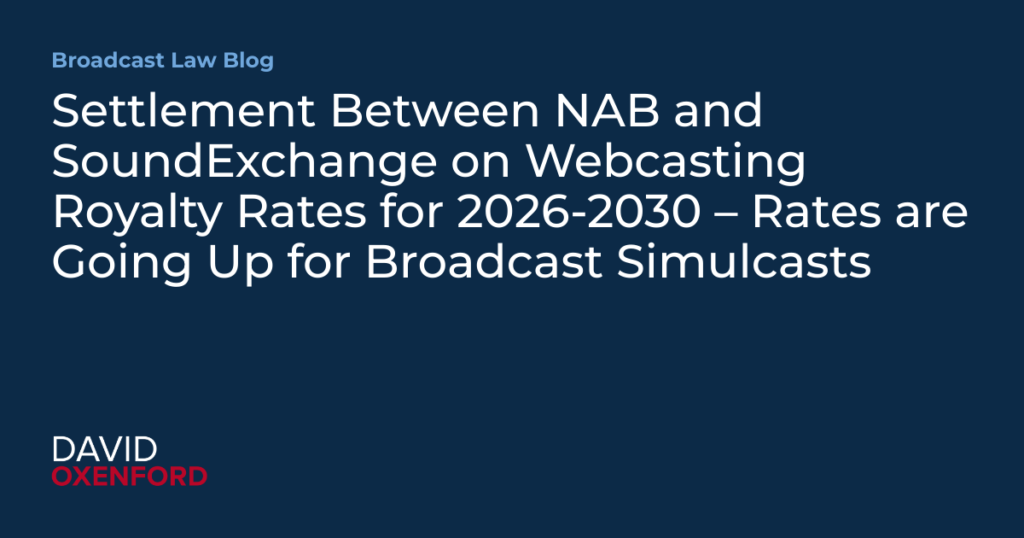A new agreement between the National Association of Broadcasters (NAB) and SoundExchange has been reached, setting royalty rates for noninteractive streaming — including broadcast simulcasts — for the years 2026 through 2030. The key takeaway? Royalty rates are going up, especially for traditional radio broadcasters who stream their content online.
📻 What’s Covered in the Deal?
The settlement specifically applies to webcasting royalties paid by commercial broadcasters for simulcasting their AM/FM stations online and for other noninteractive streams — meaning listeners can’t skip or choose tracks, similar to regular radio broadcasts. These royalties are paid to SoundExchange, which collects and distributes performance royalties to recording artists and record labels.
Rather than leaving it to the Copyright Royalty Board (CRB) to determine new rates — a process that often leads to years of litigation — the NAB and SoundExchange struck a preemptive agreement. This avoids potential legal conflict while locking in predictable rates for both sides.
💰 What Does It Mean for Broadcasters?
The agreement comes with rate increases that reflect the growing value of digital distribution — and the fact that online streaming has become a larger part of how audiences consume radio content.
While specific figures will be finalized in filings with the CRB, the deal ensures that commercial broadcasters will pay more to stream music via web simulcasts, a shift that could impact smaller stations and networks operating on tight margins.
However, from the perspective of artists and rights holders, the increase means more fair compensation for the digital use of their music — something SoundExchange has long advocated for.
🤝 Why a Settlement Now?
SoundExchange was originally pushing for a significant rate hike, signaling the possibility of a prolonged legal battle. By reaching a mutually agreed-upon settlement, both parties avoid court costs and the uncertainty of CRB-imposed rates. The deal gives the industry time to plan and adapt, and allows broadcasters to factor in the new royalty rates in their future digital strategies.
🔊 The Bigger Picture
This agreement is another marker in the evolving landscape of music licensing and digital media. With more listeners turning to online platforms and smart speakers to access their favorite stations, broadcast simulcasts are becoming as important as traditional airwaves.
As we move into 2026, broadcasters will need to weigh the costs of digital growth against the benefits of reaching broader, more digitally native audiences — and these new royalty rates will be a crucial part of that calculation.
Looking for more updates on music licensing, streaming royalties, and how they affect artists, labels, and broadcasters? Stay tuned — we’ve got you covered.





